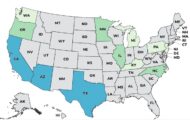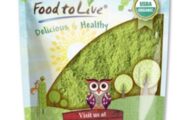Many of us buy packaged ice in the summer months, for entertaining or just to supplement the ice we make in our freezers. Have you ever thought that the ice may not be safe?
 Salmonella, Listeria, E. coli, Shigella, and viruses can survive in ice cubes. In fact, hundreds of people were sickened in 1987 after consuming contaminated ice in beverages in Pennsylvania and Delaware.
Salmonella, Listeria, E. coli, Shigella, and viruses can survive in ice cubes. In fact, hundreds of people were sickened in 1987 after consuming contaminated ice in beverages in Pennsylvania and Delaware.
According to the International Packaged Ice Association, Americans eat more ice than bread. And 80% of packaged ice is bought between Memorial Day and Labor Day. And there is very little, if any, inspection or government oversight of all packaged ice producers in this country. The International Packaged ice Association has set standards for ice safety. It’s a non-profit association that represents ice producers. The Association has some tips to help keep you and your family safe.
- Make sure the ice package is sealed properly. Drawstring ties are not a good seal for this product.
- Ice from outside vending machines may not be safe.
- The ice should be “clear, odorless and tasteless”.
- Check the ice before consuming for foreign objects or particles.
- Make sure the bag has the manufacturer’s name, address, and phone number.
- Avoid cross-contamination. If ice touches raw meat, it can become contaminated, and can spread bacteria to other foods.
Ice is a food, even though we may not think of it that way. It can be contaminated like any other food. And when the ice melts or comes into contact with other foods and it contains bacteria, you can get very sick.
If you don’t buy ice, but your refrigerator has an ice maker, it should be cleaned along with the rest of your fridge. Follow the instructions in the manufacturer’s booklet that came with your refrigerator for cleaning. The ice maker should be cleaned once a month. If the ice maker has a filter, it should be replaced at least every six months.
Stay safe this summer and follow food safety rules. And that includes making sure that ice cube floating in your drink is clean!




